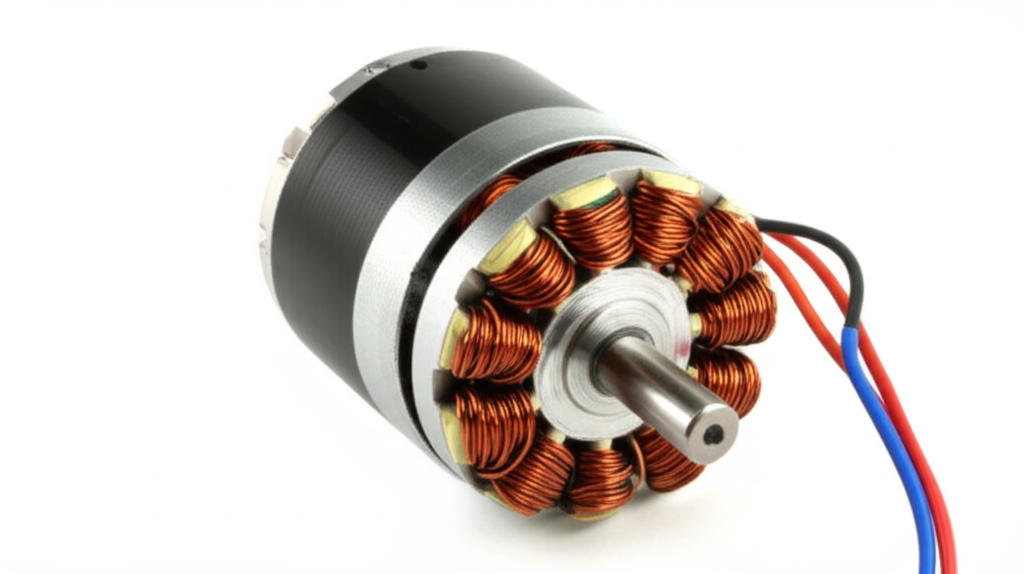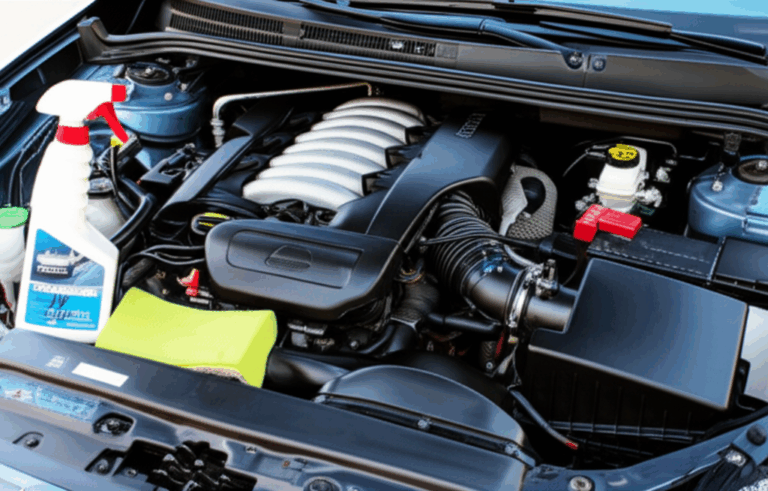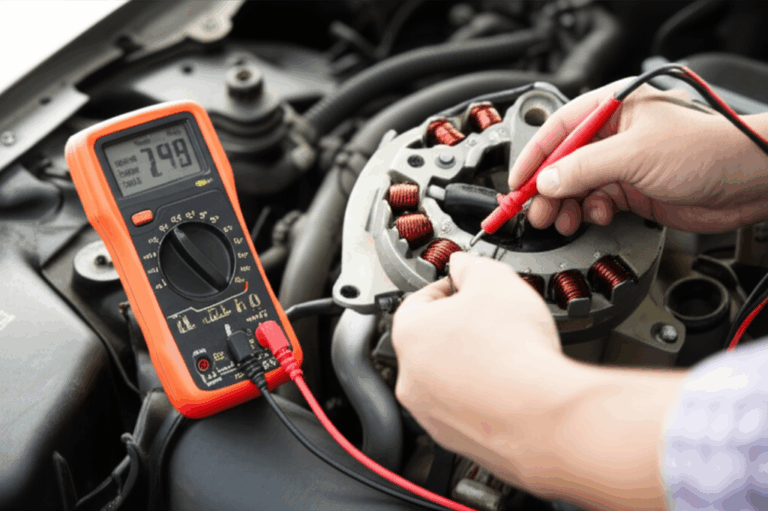
Is a Brushless Motor Better? A Comprehensive Comparison of Performance, Efficiency & Cost
- Table of Contents
- Is a Brushless Motor Better? A Comprehensive Comparison of Performance, Efficiency & Cost
- Who Needs This Guide and Why Should You Care?
- What Is a Brushed DC Motor and How Does It Work?
- What Is a Brushless DC Motor (BLDC) and Why Is It Different?
- Which Gives More Efficiency, Power, and Torque?
- How Long Do These Motors Last and How Much Care Do They Need?
- How Hot and How Loud Do They Get?
- How Do You Control Speed, RPM, and Precision?
- What About Cost: Upfront vs Long-Term?
- When Should You Choose Brushless vs Brushed?
- What Do the Parts Do: Stator, Rotor, ESC, and Laminations?
- Where Do You See These Motors: Tools, Drones, EVs, and More?
- What Do All These Motor Terms Mean in Plain English?
- Simple Decision Guide and Comparison Table
- FAQ
- Key Takeaways
Here’s the short answer. In most modern uses, yes, a brushless motor is better. It runs cooler. It lasts longer. It gives you more power per pound and better battery life. Yet that’s not the whole story. This guide shows you how both motors work, what you can expect, and how to pick the right one for your job or product.
I’ll keep it simple. I’ll use clear words and real examples. You’ll get a fast verdict and a helpful path to your best choice.
Who Needs This Guide and Why Should You Care?
Problem: You want a tool or device that works hard. You don’t want it to die fast. You need power and a long lifespan. You don’t want a motor that eats up battery life. You also care about cost.
Agitate: A weak motor wastes your time. A hot motor cuts power. Worn brushes slow you down. Noise drives you nuts. Bad control makes your work sloppy. Cheap now can mean high maintenance later.
Solution: Learn the basics. See the facts. Pick smart. In many cases a brushless DC motor (BLDC) wins the day. It uses an electronic speed controller (ESC) to deliver smooth, strong torque. It runs with less heat generation and noise level. It needs little care. That means you save money over time.
What Is a Brushed DC Motor and How Does It Work?
A brushed DC motor uses a commutator and carbon brushes to flip current in the coil (winding) on the rotor. The stator gives a magnetic field. As the rotor turns, the brushes rub on the commutator. That makes sparks. It also makes wear and friction.
This design is simple. It’s cheap. It’s easy to start and use with basic analog control. You find it in low-cost tools, toys, and some car parts like older starter motors and windshield wipers. But the brushes wear out. The motor can get hot. The speed can sag under load. Over time the maintenance adds up.
What Is a Brushless DC Motor (BLDC) and Why Is It Different?
A brushless DC motor (BLDC) flips the script. The stator has the windings. The rotor has permanent magnets. An ESC does the switching. No physical contact. No brushes. No commutator. Electronic commutation does the work.
That change boosts efficiency. It helps with power delivery and constant torque. It cuts sparking and electromagnetic interference (EMI). It runs cooler. It lasts longer. You can add a rotor position sensor for sensored control. Or you can run sensorless to save parts and cost.
Which Gives More Efficiency, Power, and Torque?
Let’s get to the heart of it. Efficiency and power.
- Brushless motors waste less energy as heat. That gives you stronger power-to-weight ratio and better battery life.
- You see steadier torque across a wide RPM range. You also see continuous power delivery under load.
- You can push to high RPM brushless speeds without the brush sparks that limit low RPM brushed units.
In cordless tools I have seen a big jump. Brands like Makita, DeWalt, Milwaukee, Bosch, and Ryobi sell power tool brushless motor lines that promote longer runtime and higher performance than older brushed models. Makers of RC brushless motor systems and drone brushless motor setups rely on BLDC too. Why? They want high thrust. They also want long flight time.
How Long Do These Motors Last and How Much Care Do They Need?
The Achilles’ heel of brushed motors is the brushes. Brushes wear. The commutator erodes. You replace parts. You clean dust. You face more downtime. In heavy use you may change brushes often.
A brushless motor has no brushes. You still have bearings. You still have electronics. Yet the motor core sees less wear. That pushes lifespan higher. You often get virtually maintenance-free service. That saves time and money. In tough sites with dust, dirt, and moisture, a sealed BLDC unit is a strong choice.
How Hot and How Loud Do They Get?
Brushed motors make heat from brush friction and from current in the rotor. Heat hurts reliability. Heat kills power. Heat shortens life. Sparks also make noise and can raise EMI.
Brushless motors cut heat since the windings sit in the stator. You can cool the stator better. Heat dissipation improves. The motor runs quieter too since there is no brush rub. In homes and labs you feel the difference. In medical devices and appliances that matters.
How Do You Control Speed, RPM, and Precision?
A brushed unit can run from a battery with a simple switch. You can add basic analog control or digital control. But speed drops under load. You can get EMI and noise. It’s hard to hold exact velocity control.
The brushless path wins for precision control. The ESC gives you fine steps. You can hold speed and position control across a wide range. You can pick sensored brushless motor systems for smooth starts. Or go sensorless brushless motor for robust, low-cost builds. That is why robotics, automation, HVAC, and drones love BLDC. You get steady power and sharp control.
What About Cost: Upfront vs Long-Term?
The sticker price is often higher for BLDC. You pay for the ESC and the build. A brushed motor has a lower entry price. So at first glance a brushed motor looks like a deal.
Look deeper. With brushless you save on energy consumption because of higher motor efficiency. You save time since you avoid brush swaps. You get longer lifespan. You trim downtime and motor replacement frequency. When you add it up the long-term cost of ownership often favors brushless.
When Should You Choose Brushless vs Brushed?
Pick brushless when:
- You work daily or push hard loads. Think cordless power tools, industrial brushless motor drives, RC vehicles, drones, electric bicycles, electric vehicles, and robotics.
- You need long battery life, constant torque, and quiet work.
- You care about durability, low maintenance, and long life.
Pick brushed when:
- You need a low price now for light jobs.
- The use is simple and short.
- High efficiency and long life are not critical.
What Do the Parts Do: Stator, Rotor, ESC, and Laminations?
The stator holds windings and sets the magnetic path. The rotor turns and delivers torque. In BLDC the ESC times the current. In brushed motors the commutator and carbon brushes do it the old way.
Inside both motors you find thin steel sheets called laminations. They cut core losses and boost motor efficiency. Good lamination design helps motor heat generation and motor reliability too. If you’re designing or sourcing, look for high-grade laminations and tight stacks.
- The quality of the stator core lamination directly affects losses and efficiency.
- A precise rotor core lamination helps with balance, RPM, and specific torque output.
- For BLDC projects, a well-made BLDC stator core supports smooth magnetic flux and strong power-to-weight ratio.
- Broadly, premium electrical steel laminations support lower losses across many motor types.
These parts sit at the heart of motor core laminations, core lamination stacks, and even transformer lamination core work in power systems. Some builds use silicon steel laminations, CRGO lamination core, or CRNGO lamination grades to hit tight specs.
Where Do You See These Motors: Tools, Drones, EVs, and More?
You see BLDC in power tool brushless motor lines for drills, saws, and grinders. Makers claim longer runtime and more torque. You see it in drone brushless motor hubs since drones need thrust and long battery life. The RC brushless motor market is huge. Hobby racers want speed and control.
In homes and shops, BLDC runs fans, pumps, HVAC blowers, and vacuum cleaner brushless motor units. Many washing machine brushless motor models use BLDC or permanent magnet synchronous motor (PMSM) tech. In the road world, electric vehicle motor drives can be BLDC, PMSM, or even induction motor types. EVs often use three-phase AC drives. They may support regenerative braking to recover energy. E-bike motor comparison pieces often point to brushless hubs for smooth control.
Brushed motors still power low-cost appliance parts, simple toys, and some single-phase fans. They are also common in older cars and basic DC motor types like simple pumps.
What Do All These Motor Terms Mean in Plain English?
You may hear a lot of terms. Let’s make them clear and tie them to the main question.
- Brushless vs brushed motor: brushless wins for efficiency, lifespan, and control in most cases.
- Brushless motor advantages and brushed motor disadvantages: no brushes, less friction, less sparking, more control, and fewer parts to wear.
- Why brushless motors are better: better commutation via electronics and reduced friction motor design.
- Brushless motor power, torque, and power-to-weight ratio brushless: higher for the size.
- Brushed motor limitations and impact of brush wear: brushes cause heat and slow downs.
- Brushless motor maintenance: low. Brushed motor pros and cons: simple and cheap, yet they wear.
- ESC, sensorless brushless motor, and sensored brushless motor: the brain and timing that make BLDC smooth and strong.
- Outrunner vs inrunner brushless: outrunner has the can on the outside for high torque at low speed. Inrunner spins inside for high RPM.
- Coreless brushless motors: no iron core reduces losses and cogging, useful in medical devices and small robotics.
- Field winding vs permanent magnet: BLDC and PMSM use magnets. Some motors use field coils.
- BLDC vs PMSM: both use magnets. PMSM runs on AC with sinusoidal control. BLDC uses DC with trapezoidal or FOC control.
- Direct current (DC) motor vs alternating current (AC) motor: brushed and BLDC are DC types while induction motor and PMSM are AC types.
- Three-phase motor vs single-phase motor: three-phase is smoother and more efficient.
- EMI and spark generation brushed motor: brushes can make noise and sparks so BLDC helps.
- Motor cooling efficiency and heat dissipation brushed motor: BLDC puts the heat in the stator so it sheds heat better.
- Specific torque output and continuous power delivery: BLDC holds torque and speed under load.
- Voltage, current, and wattage: choose to meet your load and energy consumption needs.
- Variable speed control brushless and constant torque brushless: two strong reasons to go BLDC.
- Upgrading from brushed to brushless: common in tools, RC vehicles, and e-bikes.
- Servo motor vs brushless and stepper motor vs brushless: servos and steppers give precise position control, yet BLDC with an encoder can match or beat them for speed and efficiency.
- Motor size comparison and motor weight comparison: BLDC often packs more muscle in less size and weight.
- Motor controller requirements and rotor position sensor: plan your ESC and feedback.
- Environmental impact motors and energy savings: higher efficiency means less waste.
- Latest motor advancements: better magnets, smarter ESCs, and improved materials like high-grade lamination steel.
- Compact brushless motor and precision control brushless: strong fit for drones and small robots.
- Motor repair cost and motor replacement frequency: lower for BLDC over time if you pick good parts.
- Industrial brushless motor, motor for automation, motor for HVAC, motor for robotics, motor for medical devices: all strong BLDC use cases.
- Motor performance metrics: look at efficiency ratings, torque, RPM, and power.
- Battery life with brushless and better battery efficiency motor: clear wins with BLDC in cordless gear.
Simple Decision Guide and Comparison Table
Here is a quick table that sums up the key points you care about.
| Feature / Metric | Brushless DC Motor (BLDC) | Brushed DC Motor | Why It Matters |
|---|---|---|---|
| Efficiency | 85–90% or higher | 70–80% typical | Better runtime and less heat |
| Torque under load | Strong and steady | Drops with load | Smooth work, fewer stalls |
| Power-to-weight | High | Lower | More power in a small size |
| Heat generation | Low | Higher | Less stress on parts |
| Noise level | Low | Higher | Quiet tools and devices |
| Maintenance | Very low | Brush swaps and cleaning | Less downtime |
| Lifespan | Long | Shorter due to brush wear | Fewer replacements |
| Speed control | Precise with ESC | Less precise | Better cuts and moves |
| EMI/sparking | Very low | High | Cleaner operation |
| Initial cost | Higher | Lower | You pay more at first |
| Long-term cost | Lower | Higher | You save over time |
| Typical uses | Drones, EVs, tools, HVAC, robotics | Toys, simple fans and pumps | Use the right fit |
PAS recap:
- Problem: You need more power and time on the job.
- Agitate: Heat, noise, and brush wear slow you down.
- Solution: Use a brushless motor for better performance, longer lifespan, and lower total cost.
FAQ
Q: Is a brushless motor always better?
A: Not always. If your use is rare and light, a cheap brushed motor can make sense. For most daily or pro work, brushless wins.
Q: Do brushless motors need an ESC?
A: Yes. The electronic speed controller handles commutation and timing.
Q: What about PMSM and induction motor in EVs?
A: EV makers use both. PMSM uses magnets and runs with high efficiency. Induction motors are tough and can be cost effective.
Q: Sensorless or sensored BLDC?
A: Sensorless is simple and rugged. Sensored is smoother at low speed and under heavy start-up loads.
Q: Can brushless motors do regenerative braking?
A: With the right controller and design, yes in EVs and some e-bikes.
References
- Manufacturer catalogs and datasheets from Makita, DeWalt, Milwaukee, Bosch, and Ryobi for brushed vs brushless tools and runtime claims.
- Electric machines textbooks and training materials covering DC motors, BLDC, PMSM, and induction motors.
- Industry white papers and application notes on BLDC control, ESC design, and sensorless methods.
- Drone and RC maker documentation on outrunner and inrunner BLDC motors and control.
Key Takeaways
- Brushless motors give higher efficiency, better torque, and longer lifespan.
- You get less heat generation, lower noise level, and tighter speed control.
- Brushed motors still work for low-cost, light, and simple jobs.
- Think about initial cost and long-term cost of ownership. Brushless often pays back.
- For builders and buyers, quality in the stator, rotor, and laminations matters. Consider premium solutions like strong stator core lamination, precise rotor core lamination, engineered BLDC stator core, and proven electrical steel laminations to hit your goals.








